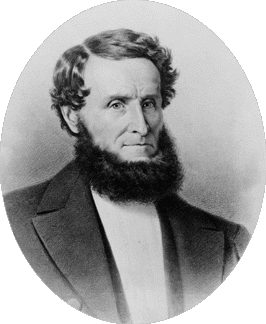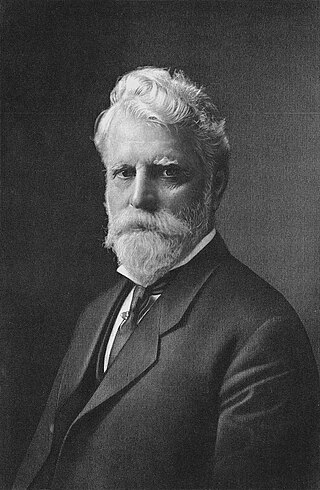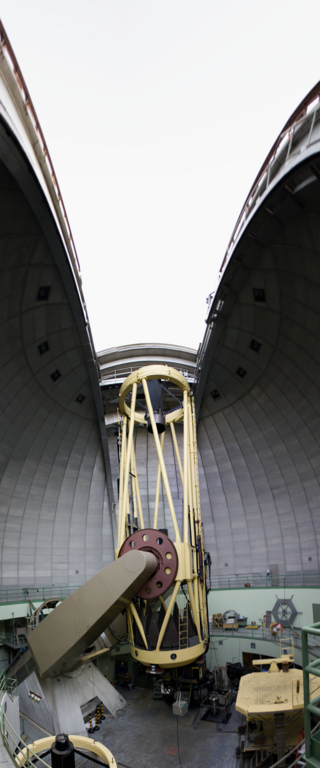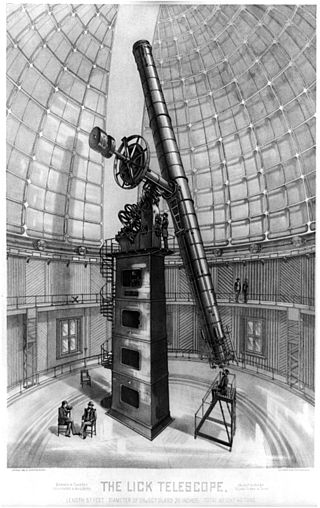
The Lick Observatory is an astronomical observatory owned and operated by the University of California. It is on the summit of Mount Hamilton, in the Diablo Range just east of San Jose, California, United States. The observatory is managed by the University of California Observatories, with headquarters on the University of California, Santa Cruz campus, where its scientific staff moved in the mid-1960s. It is named after James Lick.

James Lick was an American real estate investor, carpenter, piano builder, land baron, and patron of the sciences. The wealthiest man in California at the time of his death, Lick left the majority of his estate to social and scientific causes.

Charles Dillon Perrine was an American astronomer at the Lick Observatory in California (1893-1909) who moved to Cordoba, Argentina to accept the position of Director of the Argentine National Observatory (1909-1936). The Cordoba Observatory under Perrine's direction made the first attempts to prove Einstein's theory of relativity by astronomical observation of the deflection of starlight near the Sun during the solar eclipse of October 10, 1912 in Cristina (Brazil), and the solar eclipse of August 21, 1914 at Feodosia, Crimea, Russian Empire. Rain in 1912 and clouds in 1914 prevented results.

The Astronomical Society of the Pacific (ASP) is an American scientific and educational organization, founded in San Francisco on February 7, 1889, immediately following the solar eclipse of January 1, 1889. Its name derives from its origins on the Pacific Coast, but today it has members all over the country and the world. It has the legal status of a nonprofit organization.

Ambrose Swasey was an American mechanical engineer, inventor, entrepreneur, manager, astronomer, and philanthropist. With Worcester R. Warner he co-founded the Warner & Swasey Company.
Leuschner Observatory, originally called the Students' Observatory, is an observatory jointly operated by the University of California, Berkeley and San Francisco State University. The observatory was built in 1886 on the Berkeley campus. For many years, it was directed by Armin Otto Leuschner, for whom the observatory was renamed in 1951. In 1965, it was relocated to its present home in Lafayette, California, approximately 10 miles (16 km) east of the Berkeley campus. In 2012, the physics and astronomy department of San Francisco State University became a partner.
George David Madeira was a mining engineer and mineralogist who founded the first astronomical observatory in California in the town of Volcano.

The James Lick Telescope is a refracting telescope built in 1888. It has a lens, which is 91 centimetres (36 in) in diameter—a major achievement in its day. The instrument remains in operation and public viewing is allowed on a limited basis. Also called the "Great Lick Refractor" or simply "Lick Refractor", it was the largest refracting telescope in the world until 1897, and now ranks third, after the 40-inch refractor at the Yerkes Observatory and the Swedish 1-m Solar Telescope. The telescope is located at the University of California's Lick Observatory atop Mount Hamilton at an elevation of 1,283 metres (4,209 ft) above sea level. The instrument is housed inside a dome that is powered by hydraulic systems that raise and lower the floor, rotate the dome and drive the clock mechanism to track the Earth's rotation. The original hydraulic arrangement still operates today, with the exception that the original wind-powered pumps that once filled the reservoirs have been replaced with electric pumps. James Lick is entombed below the floor of the observing room of the telescope.

The Katzman Automatic Imaging Telescope (KAIT) is an automated telescope used in the search for supernovae.

The C. Donald Shane telescope is a 120-inch (3.05-meter) reflecting telescope located at the Lick Observatory in San Jose, California. It was named after astronomer C. Donald Shane in 1978, who led the effort to acquire the necessary funds from the California Legislature, and who then oversaw the telescope's construction. It is the largest and most powerful telescope at the Lick Observatory, and was the second-largest optical telescope in the world when it was commissioned in 1959.

The Carnegie telescope is a twin 20-inch (510 mm) refractor telescope located at Lick Observatory in California, United States. The double telescope's construction began in the 1930s with a grant from the Carnegie institution, although it was not completed until the 1960s when a second lens was added. The telescope is not designed for visual observation, rather it has two lenses used for taking photographs for a specific wavelength recorded on a film emulsion. It was used for photographic sky surveys in the late 20th century, which were successfully completed.

Alvan Clark & Sons was an American maker of optics that became famous for crafting lenses for some of the largest refracting telescopes of the 19th and early 20th centuries. Founded in 1846 in Cambridgeport, Massachusetts, by Alvan Clark, and his sons George Bassett Clark (1827–1891) and Alvan Graham Clark (1832–1897). Five times, the firm built the largest refracting telescopes in the world. The Clark firm gained "worldwide fame and distribution", wrote one author on astronomy in 1899.

The Automated Planet Finder (APF) Telescope a.k.a. Rocky Planet Finder, is a fully robotic 2.4-meter optical telescope at Lick Observatory, situated on the summit of Mount Hamilton, east of San Jose, California, USA. It is designed to search for extrasolar planets in the range of five to twenty times the mass of the Earth. The instrument will examine about 10 stars per night. Over the span of a decade, the telescope is expected to study 1,000 nearby stars for planets. Its estimated cost was $10 million. The total cost-to-completion of the APF project was $12.37 million. First light was originally scheduled for 2006, but delays in the construction of the major components of the telescope pushed this back to August 2013. It was commissioned in August 2013.

The Coudé Auxiliary Telescope (CAT) is a coudé focus telescope located at the Lick Observatory near San Jose, California, south of Shane Dome, Tycho Brahe Peak.

The Crossley telescope is a 36-inch (910 mm) reflecting telescope located at Lick Observatory in the U.S. state of California. It was used between 1895 and 2010, and was donated to the observatory by Edward Crossley, its namesake.

Nicholas Ulrich Mayall was an American observational astronomer. After obtaining his doctorate from the University of California, Berkeley, Mayall worked at the Lick Observatory, where he remained from 1934 to 1960, except for a brief period at MIT's Radiation Laboratory during World War II.
Steven Scott Vogt is an American astronomer of German descent whose main interest is the search for exoplanets.
The Lick–Carnegie Exoplanet Survey (LCES) is a search for exoplanets using the Keck I optical telescope of the W. M. Keck Observatory in Hawaii. The survey is sponsored by NASA and the National Science Foundation. The survey comprises a decade of observations. The survey is led by Steven Vogt, professor of astronomy and astrophysics at University of California at Santa Cruz, and R. Paul Butler of the Carnegie Institution.
Gerald Kron was an American astronomer who was one of the pioneers of high-precision photometry with photoelectric instrumentation. He discovered the first starspot and made the first photometric observation of a stellar flare.
Tenagra Observatory and Tenagra Observatory II are astronomical observatories in Cottage Grove, Oregon and Arizona. The observatories house heavily automated robotic telescopes.















